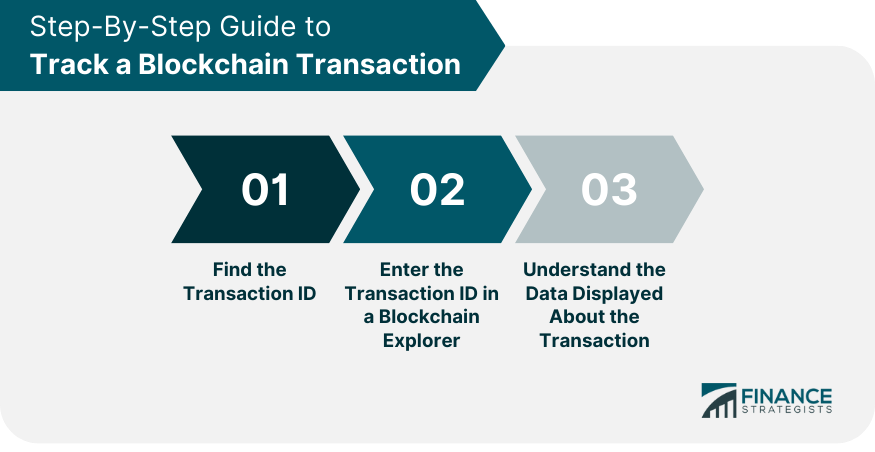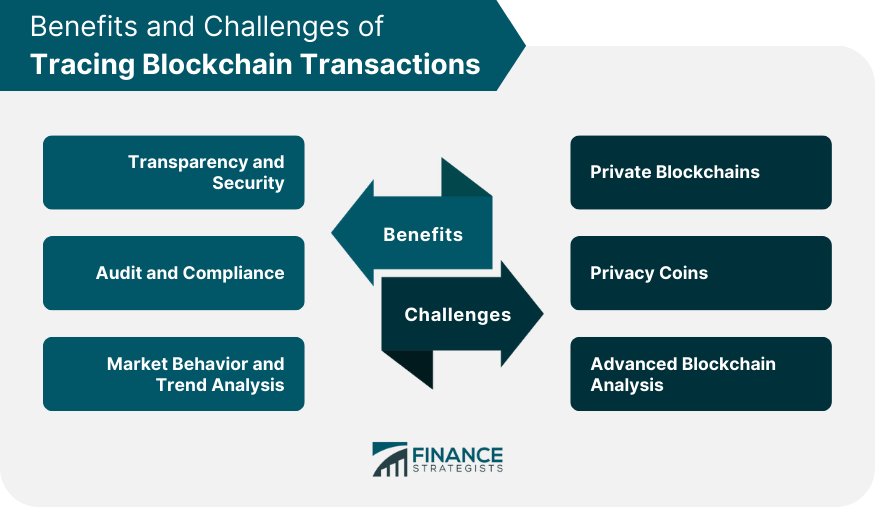Blockchain, originally developed as the accounting method for Bitcoin, is a database that packages multiple records into blocks, which are then chronologically linked to form a chain. This decentralized, distributed ledger system offers transparency and incorruptibility, revolutionizing industries from finance to healthcare by redefining their transactional processes. A transaction within a blockchain is a small task executed within the network. When initiated, the transaction is processed, validated, and then added to a block. Each block contains a list of such validated transactions, enhancing the chain's continuity. In the case of cryptocurrencies like Bitcoin or Ethereum, a transaction signifies the transfer of digital currency between accounts. One significant feature of blockchain is the immutability of transactions; once a transaction is incorporated into the blockchain, it cannot be altered or deleted, ensuring the integrity of the record. In an open, transparent system like blockchain, the ability to track transactions has numerous benefits. It aids in auditability, as every transaction can be traced to its origin. It enhances transparency as every transaction is visible to every participant. It also allows for real-time tracking, meaning you can see transaction progress from initiation to completion. Moreover, tracking blockchain transactions is key to ensuring the security of operations within the blockchain. With this functionality, one can identify suspicious activities and take action, thus helping to prevent fraudulent practices. Finally, it’s also a crucial feature for resolving disputes over transactions and ensuring trust in the blockchain network. Transaction tracking involves following a transaction as it's included in a block and added to the blockchain. This is made possible by the transparency and immutability of the blockchain. Each transaction is broadcast to the network, and from there, it is included in the blockchain by miners. The details about these transactions are then freely available on the blockchain for anyone to see and verify. Tracking transactions on the blockchain is important for several reasons. For businesses, it ensures that they can verify transactions that have occurred, tracing every digital transaction back to its origin. For individuals, it can help verify that their transactions have been successfully processed. For regulators and investigators, it's a crucial tool to trace illicit activities. In a typical blockchain transaction, you can see the sender's address, the recipient's address, the transaction value, the block number (or block height), and the transaction hash (a unique identifier). Additionally, you can also see the timestamp of when the transaction was added to the blockchain. Other visible information may include the number of confirmations (which is related to the number of blocks added after the block that contains your transaction), the fee paid for the transaction (if applicable), and input and output indexes (useful in complex transactions). The main tool needed for tracking blockchain transactions is a blockchain explorer. A blockchain explorer is a search engine that allows users to explore the blockchain and see transaction details. These explorers are invaluable tools for verifying transactions, investigating suspicious activities, or simply learning more about how the blockchain operates. Different cryptocurrencies have different blockchain explorers optimized for their specific architectures. For Bitcoin, the largest and most well-known cryptocurrency, Blockchain.com is a popular choice. This explorer allows you to view transaction details, wallet addresses, and even the distribution of hash power on the network. Etherscan, on the other hand, is an explorer designed for Ethereum, the blockchain that supports Ether (ETH) and the wide world of decentralized applications (dApps) and smart contracts. Like Blockchain.com, Etherscan provides detailed transaction and address information. Moreover, it provides insight into the execution of smart contracts, which is a key feature of the Ethereum network. In addition to blockchain explorers, wallet services can also help track transactions. Most digital wallets will provide a list of all incoming and outgoing transactions associated with your wallet. They often include direct links to these transactions on a blockchain explorer for ease of access. These services are particularly helpful for personal transaction tracking. Other resources may include APIs provided by blockchain platforms, which can be used to retrieve transaction data programmatically. This could be useful for businesses or advanced users who need to track transactions on a large scale or integrate transaction tracking into their own applications. The first step to tracking a blockchain transaction is to find the transaction ID, also known as a transaction hash. This unique identifier is created whenever a transaction is made on a blockchain network. The transaction ID can usually be found in the transaction history of the wallet service that you used to send or receive funds. It is a long string of alphanumeric characters and serves as the fingerprint of the transaction on the blockchain. Once you have the transaction ID, you can now track the transaction. Navigate to a blockchain explorer compatible with the blockchain of the transaction. For instance, if it is a Bitcoin transaction, use a Bitcoin blockchain explorer like Blockchain.com. Enter the transaction ID in the search bar of the blockchain explorer. The explorer will then search the blockchain for that specific transaction and display it. Once you've entered the transaction ID, you'll see a range of data related to your transaction. This usually includes the transaction status, the time the transaction occurred, the details of the transaction inputs and outputs (i.e., the sending and receiving addresses), and the amount of cryptocurrency that was transacted. Understanding the results of a tracked blockchain transaction requires familiarizing yourself with several terms. The "Block Height" refers to the specific place in the blockchain where your block resides. The "Timestamp" is the date and time the transaction was confirmed and added to the blockchain. "Transaction Hash" is another term for transaction ID, the unique identifier for the transaction. "From/To" are the addresses of the sender and receiver of the transaction. " Value" is the amount of cryptocurrency that was sent. "Gas" is a term specific to Ethereum and similar blockchains, which refers to the fee required to perform the transaction. The status of the transaction provides essential information about the transaction's progress. If it's "Pending", it means the transaction is waiting to be processed by the network. If it's "Confirmed", it means the transaction was successfully validated and included in a block on the blockchain. If it's "Failed", it means the transaction was not successfully processed and thus not included in the blockchain. Finally, understanding the inputs and outputs in a transaction can provide a clearer picture of the transaction flow. The inputs are the addresses from which the cryptocurrency was sent, while the outputs are the addresses to which the cryptocurrency was sent. This shows the path that the cryptocurrency took during the transaction. Tracing blockchain transactions offers a myriad of advantages, spanning various domains from security to market analytics. Here's a breakdown of these benefits: Blockchain's fundamental quality is its transparency. Each transaction is recorded on a publicly accessible ledger, which means tracing transactions aids in maintaining the security and integrity of the system. This level of transparency makes it more difficult for fraudulent activities to occur unnoticed. Tracing blockchain transactions can lead to the detection and prevention of potential illicit activities, such as money laundering or illegal trading, thus bolstering the network's overall security. For companies operating within the blockchain and cryptocurrency sectors, tracing transactions is crucial to ensure regulatory compliance and accurate auditing. The ability to trace and verify transactions helps businesses provide clear, indisputable records of their activities. This transparency can assist in assuring stakeholders of a company's operations and demonstrating compliance with relevant regulations. Tracing blockchain transactions can also yield valuable insights into market behavior and trends. By tracking the flow of cryptocurrencies, analysts can spot patterns and predict market behaviors. Observations such as the activities of large cryptocurrency holders, commonly referred to as 'whales', or responses to significant market events, can be critical for traders and investors alike. Despite the significant benefits, tracing blockchain transactions also poses some challenges: Unlike public blockchains, where transaction data is freely accessible, private blockchains restrict access to data. As such, tracing transactions becomes more complex and might require special permissions or the use of professional services. Another challenge arises from privacy-focused cryptocurrencies or privacy coins. These cryptocurrencies, like Monero and Zcash, are designed to obfuscate transaction data, which makes tracking transactions far more complex than on more transparent blockchains like Bitcoin or Ethereum. The rapidly evolving nature of blockchain technology often results in increasingly complex transactions, particularly on networks that support smart contracts like Ethereum. These complex transactions can include 'internal transactions' and contract interactions, which can be more difficult to trace and interpret without advanced blockchain analysis tools. Blockchain transaction tracking is a process that allows you to follow the journey of a transaction from one address to another on a blockchain. By obtaining the transaction ID (hash), entering it into a blockchain explorer, and interpreting the resulting data, you can gain valuable insights into the details of any transaction. Tracking blockchain transactions is not only crucial for understanding one's personal transactions, but it's also key for investigating fraud, ensuring regulatory compliance, and gaining insights into market behavior. Despite challenges posed by private blockchains and privacy coins, advanced blockchain analysis tools offer effective solutions. If you find tracking blockchain transactions challenging or time-consuming, it might be beneficial to seek professional services. Specialized companies offer sophisticated tools and expertise that can make the process easier, more comprehensive, and tailored to your specific needs.Overview of Blockchain and Blockchain Transactions
Importance of Tracking Blockchain Transactions
Understanding How to Track a Blockchain Transaction
Transaction Tracking and Its Importance
What Transaction Information Is Available on the Blockchain
Required Tools and Resources for Tracking a Blockchain Transaction
Identifying Required Tools Like Blockchain Explorers
Popular Blockchain Explorers for Various Cryptocurrencies
Other Resources Like Wallet Services
Detailed Step-By-Step Guide to Track a Blockchain Transaction
Find the Transaction ID
Enter the Transaction ID in a Blockchain Explorer
Understand the Data Displayed About the Transaction

Interpreting Results of a Tracked Blockchain Transaction
Explanation of Terms
Understanding the Status of the Transaction
Observing the Inputs and Outputs in a Transaction
Benefits of Tracing Blockchain Transactions
Transparency and Security
Audit and Compliance
Market Behavior and Trend Analysis
Challenges of Tracing Blockchain Transactions
Private Blockchains
Privacy Coins
Advanced Blockchain Analysis

The Bottom Line
How to Track a Blockchain Transaction FAQs
To track a blockchain transaction, you need to find the transaction ID (hash), input it into a blockchain explorer compatible with the blockchain on which the transaction occurred, and interpret the resulting data.
Tracking blockchain transactions is crucial for investigating potential fraud, ensuring regulatory compliance, understanding personal transactions, and gaining insights into market trends.
Tracking transactions on a private blockchain often requires special permissions to access the data. In some cases, professional blockchain analysis services might be necessary.
Transactions involving privacy coins can be more challenging to track due to advanced obfuscation techniques. However, specialized blockchain analysis tools are becoming increasingly capable of deciphering these complex transactions.
Blockchain explorers and advanced blockchain analysis tools, such as those offered by Chainalysis and CipherTrace, can help in tracking and understanding blockchain transactions.
True Tamplin is a published author, public speaker, CEO of UpDigital, and founder of Finance Strategists.
True is a Certified Educator in Personal Finance (CEPF®), author of The Handy Financial Ratios Guide, a member of the Society for Advancing Business Editing and Writing, contributes to his financial education site, Finance Strategists, and has spoken to various financial communities such as the CFA Institute, as well as university students like his Alma mater, Biola University, where he received a bachelor of science in business and data analytics.
To learn more about True, visit his personal website or view his author profiles on Amazon, Nasdaq and Forbes.















